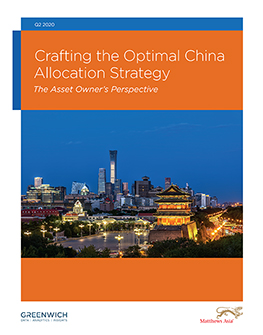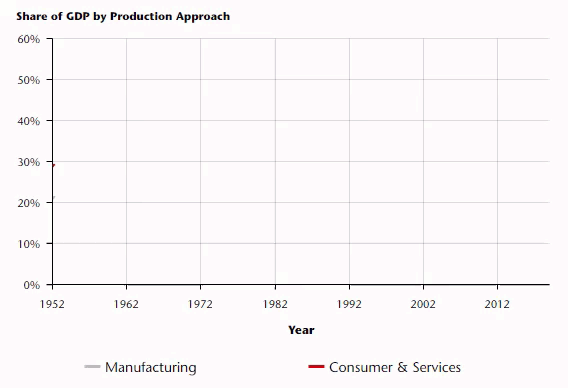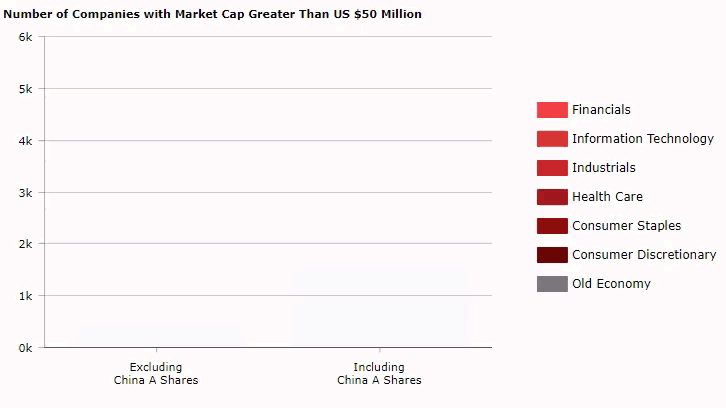Terms and Conditions of Use
Matthews International Capital Management, LLC (“Matthews” or “we”) is the owner of this website. This website is intended for use only by Institutional Investors in the United States and Canada. For purposes of this website the term “Institutional Investors” means sophisticated non-retail investors, which includes pension funds, endowments, foundations, plan sponsors, investment companies and investment advisers. This website is not intended for use by retail investors or investors that do not reside in the United States or Canada.
All use is subject to these Terms and Conditions of Use. Please read the following before proceeding, as it explains the terms and conditions on use of this website.
By clicking “I Agree” you expressly acknowledge that you are an Institutional Investor as defined above, and accept these Terms and Conditions of Use.
If you are not an Institutional Investor as defined above that resides in the US or Canada or do not agree to these Terms and Conditions of Use, do not use this site.
WE RESERVE THE RIGHT TO CHANGE, MODIFY, ADD OR REMOVE PORTIONS OF THESE TERMS AT ANY TIME FOR ANY REASON WITH IMMEDIATE EFFECT. PLEASE REVIEW THESE TERMS PERIODICALLY FOR REVISIONS. BY ACCESSING OUR WEBSITE AFTER WE HAVE POSTED REVISIONS, YOU ARE AGREEING TO THESE TERMS AND CONDITIONS OF USE AS REVISED.
Website and Content
This website is for informational purposes only. Neither this website nor any of its content constitutes investment, tax, accounting, regulatory, legal, insurance or any other type of advice, a recommendation of any security, investment management or advisory service, a solicitation or offer to buy or sell any investment product, nor is it to be relied on in making any investment decisions. You should obtain relevant and specific professional advice before making any investment decision. Matthews does not represent that the solutions or strategies discussed in this website are suitable or appropriate for all investors.
No warranty or representation is made with respect to the content on this website, including, without limitation, that the information is accurate, complete or timely. The content on this website is current at the time of writing and is subject to change without notice. Any views expressed herein are those of the author(s) and are also subject to change without notice. Individual portfolio managers may hold different views from those expressed herein.
This website may include content containing forward-looking statements which are based on opinions, expectations and projections as of the date made. We undertake no obligation to update or revise any forward-looking statements, and users should check the “as of” dates of all published materials. Actual results could differ materially from those anticipated in the forward-looking statements. Past performance is no guarantee of future results. Opinions, expectations and projections are no indication of Matthews’ current holdings or future investments. Matthews, its affiliates and its and their directors, employees, content providers, or other representatives may own or have positions in any investment mentioned herein or any investment related thereto and from time to time add to or dispose of any such investment.
The information on this website is not intended for distribution to, or use by, any person or entity in any jurisdiction or country where such distribution or use would be contrary to law or regulation, or which would subject Matthews or its affiliates to any registration requirement within such jurisdiction or country. The information on this website is solely for use by Institutional Investors in the US and Canada and may not be copied, reproduced or redistributed in any form, whether in part or full.
By accessing this website you represent that you are permitted by the laws of your jurisdiction of residence to access this site and the information contained herein.
Appropriate Use
Please use this website appropriately. As a condition to your use of this website, you agree not to take any action that is intended to or could damage or overburden our server, or any network connected to our server or to use this website in such a way that it interferes with the proper functioning or any other party’s use of this website.
No Warranty
THIS WEBSITE AND ITS CONTENT ARE PROVIDED “AS IS” AND “AS AVAILABLE.” NO WARRANTY OF ANY KIND, EXPRESS OR IMPLIED, IS GIVEN. WITHOUT LIMITING THE FOREGOING, WE SPECIFICALLY DISCLAIM ANY WARRANTY AS TO THE ACCURACY, ADEQUACY, COMPLETENESS, OR TIMELINESS OF THE INFORMATION ON THIS WEBSITE, NON-INFRINGEMENT OF THIRD-PARTY RIGHTS, TITLE, MERCHANTABILITY, FITNESS FOR A PARTICULAR PURPOSE, FREEDOM FROM COMPUTER VIRUS OR THE ERROR-FREE USE OF THIS WEBSITE. YOU AGREE TO ASSUME THE ENTIRE RISK AS TO YOUR USE OF THE WEBSITE.
Limitation of Liability
IN NO EVENT SHALL MATTHEWS OR OUR AFFILIATES OR OUR OR THEIR DIRECTORS, EMPLOYEES, CONTENT PROVIDERS, OR OTHER REPRESENTATIVES BE LIABLE FOR ANY DAMAGES, LOSSES, OR LIABILITIES INCLUDING WITHOUT LIMITATION, DIRECT OR INDIRECT, SPECIAL INCIDENTAL, CONSEQUENTIAL DAMAGES, LOSSES, OR LIABILITIES, ARISING OUT OF OR RELATED TO YOUR USE OF THIS WEBSITE OR YOUR RELIANCE ON OR USE OR INABILITY TO USE THE INFORMATION, MATERIALS, PRODUCTS, AND SERVICES ON THIS WEBSITE, OR ANY FAILURE OF PERFORMANCE, ERROR, OMISSION, INTERRUPTION, DEFECT, DELAY IN OPERATION OR TRANSMISSION, COMPUTER VIRUS, OR LINE OR SYSTEM FAILURE, EVEN IF MATTHEWS IS ADVISED OF THE POSSIBILITY OF SUCH DAMAGES, LOSSES, OR EXPENSES.
YOU UNDERSTAND AND AGREE THAT YOUR USE OF THIS WEBSITE IS PREDICATED UPON YOUR WAIVER TO THE MAXIMUM EXTENT PERMITTED BY LAW OF ANY RIGHT TO SUE MATTHEWS OR OUR AFFILIATES OR OUR OR THEIR DIRECTORS, EMPLOYEES, CONTENT PROVIDERS, OR OTHER REPRESENTATIVES DIRECTLY OR TO PARTICIPATE IN A SUIT FOR ANY LOSSES OR DAMAGES ARISING FROM OR RELATED TO YOUR USE OF THIS WEBSITE.
Indemnification
You will indemnify Matthews, our affiliates and our and their officers, directors, employees and agents in respect of any third-party claim for any injury, loss, damage or expense arising directly or indirectly from or related to your use of this website or your supply of information to a third party provided in breach of any of your obligations under these Terms and Conditions of Use.
Intellectual Property
All materials on this website are owned or licensed by Matthews or its third-party providers and are protected by US and international intellectual property laws. Unless otherwise indicated, all service marks, trademarks, and logos appearing on this web site are the exclusive property of Matthews. The information, materials, and other content of this web site may not be copied, displayed, distributed, downloaded, licensed, modified, published, reposted, reproduced, reused, sold, transmitted, redelivered using “framing” technology, used to create a derivative work, or otherwise used for public or commercial purposes without the express written consent of Matthews.
Links
This website may have links to third party websites, which are not controlled by Matthews. We are not responsible for the content or accuracy of third-party websites linked from this website, nor do we guarantee the products or services offered on third-party websites. Your use of the links on this website to third party websites is at your own risk. Prior to use, you should review the applicable terms and conditions of use and privacy statements of any websites you visit, including those linked from this website.
Privacy Statement
Matthews is committed to protecting the personal information provided to us by our clients and prospective clients. This section provides further details on how we collect, share, transfer and protect personal information provided to us by our clients and prospective clients.
Collecting Information
Matthews may collect non-public personal information about you on RFPs, questionnaires, and other forms we receive from you, including those submitted to us via this website, as well as from personal contacts such as correspondence, e-mail, telephone calls, or meetings. We may also receive information about you from third parties, such as your accountants, lawyers, financial consultants, and other service providers.
It also is possible to receive information from web browsers and apps regarding certain of your online activities using cookies, or other common tracking technologies. Some web browsers and other applications may provide a Do Not Track preference setting. When a user turns on a tracking preference, the browser or application may send a message to web sites requesting that they do or do not track the user. Currently we take no actions in response to any Do Not Track settings or messages.
Usage and Information Sharing
Matthews does not disclose nonpublic personal information about past, current or prospective clients to any unaffiliated third parties for their own marketing purposes. However, to facilitate our own client servicing, marketing, compliance and risk management, information regarding clients and prospective clients may be shared broadly among Matthews and our affiliates. Further, we may disclose information, including nonpublic personal information, as necessary or helpful to effect transactions, administer accounts and risk management.
Matthews may also disclose your information as required or permitted by law or in response to a regulator request.
Information Security
We use technical, administrative, and procedural measures in an attempt to safeguard your personal and other information from unauthorized access or use. No such measure is ever 100% effective though, so we do not guarantee that your personal and other information will be secure from theft, loss, or unauthorized access or use, and we make no representation as to the reasonableness, efficacy, or appropriateness of the measures we use to safeguard such information.
Transfer of data to other countries
Any information you provide to Matthews through use of this website may be stored and processed, transferred between, and accessed from the US and Canada and other countries which may not guarantee the same level of protection of personal information as the one in which you reside. Regardless of where your personal information is stored or accessed, we will handle your personal information in accordance with this Privacy Statement.
Cookies
A cookie is a small file placed on a computer’s hard drive that allows a website to recognize that computer each time someone uses it to visit that site. It contains information about preferences for using the site that have been established by someone using that computer. Cookies may also be used to keep track of the pages looked at during a visit as well as the path taken to those pages. Our website sometimes uses cookies to track how our visitors move through the site. We use this information to identify areas of the site that are of interest to investors or that can be improved.
When you visit this website, you may receive cookies that are set by third party advertising networks. These cookies are used for analytical purposes. We do not control the setting of these third party cookies, so you may wish to check the third party websites for more information about their use of cookies and how to manage them.
Most web browsers are set up to automatically accept cookies. Users can, however, amend the configuration of the web browser on their computers so that they are systematically notified of any instance where the Websites that they are about to visit contain cookies. You may also be able to configure your browser to accept all cookies, reject all cookies, notify you when a cookie is set, or delete cookies that have already been set. Each browser is different, so check the “Help” menu of your browser to learn how to change your cookie preferences. You are always free to decline our cookies if your browser permits, although in that case you may not be able to use certain features on our Website.
Termination
The rights granted to you herein terminate immediately if you fail to comply with the Terms and Conditions of Use. Additionally, Matthews, in its sole discretion, reserves the right to temporarily or permanently terminate your access to and use of this website at any time, for any reason, without notice or liability.
Integration and Severability
If any provision of these Terms and Conditions of Use is deemed unlawful, void, or for any reason unenforceable, then that provision will be deemed severable from these Terms and Conditions of Use and will not affect the validity and enforceability of the remaining provisions. The preceding Terms and Conditions of Use represent the entire agreement between Matthews and the user relating to the subject matter herein.
Governing Law and Jurisdiction
These Terms and Conditions of Use shall be governed by and interpreted in accordance with the laws of the State of California, United States of America and the courts of the State of California, United States of America shall have exclusive jurisdiction to hear all disputes arising from or related to your use of this website or these Terms and Conditions of Use.


